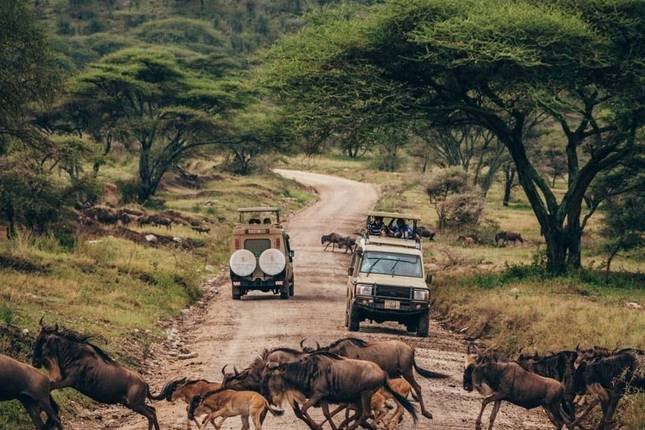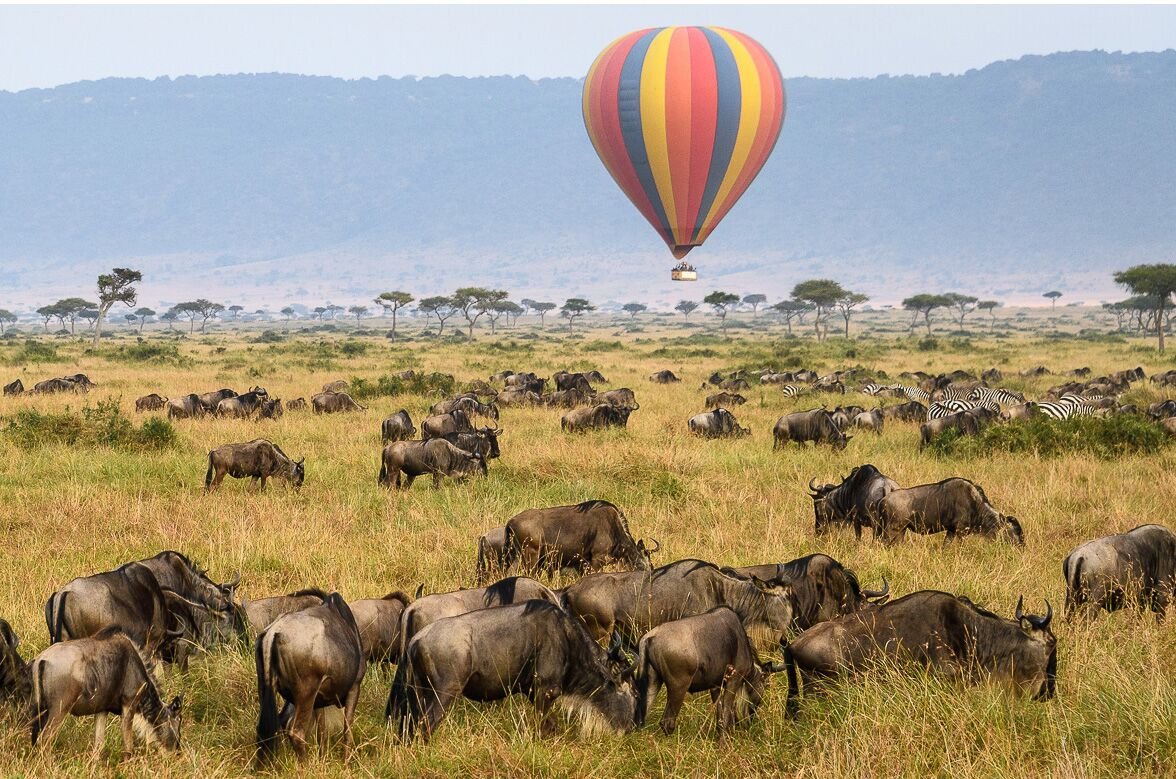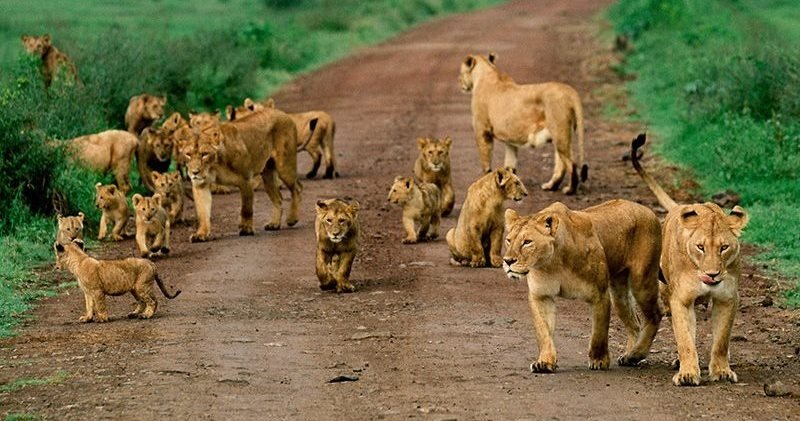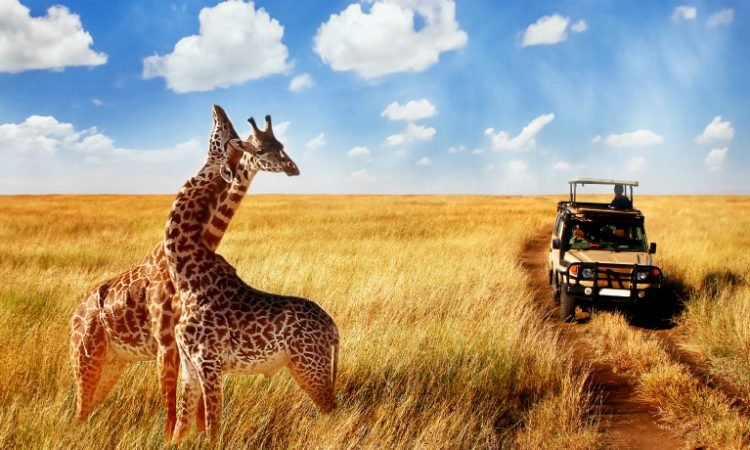Introduction
Start with an engaging introduction that provides an overview of Tanzania’s appeal as a top safari destination. Highlight its renowned national parks, rich wildlife, and incredible landscapes.
- Hook: “Tanzania, the crown jewel of African safaris, boasts some of the most iconic national parks in the world. From the plains of the Serengeti to the diverse ecosystems of the Ngorongoro Crater, a Tanzania safari is the ultimate adventure for nature lovers.”
- Mention Tanzania’s reputation for safari tourism and why exploring its national parks is a bucket-list experience.
1. Serengeti National Park
Start with the Serengeti, Tanzania’s most famous park, known for the Great Wildebeest Migration.
- Overview: Discuss the Serengeti’s landscape, wildlife, and ecosystem.
- Key Highlights: Focus on the annual migration, Big Five animals, and the park’s different regions (Northern, Central, Western).
- Activities: Hot air balloon safaris, game drives, and bird watching.
- Best Time to Visit: Detail the optimal times based on migration patterns.
2. Ngorongoro Crater Conservation Area
Ngorongoro is a UNESCO World Heritage Site and home to the world’s largest inactive volcanic caldera.
- Overview: Introduce the geological and historical significance of the Ngorongoro Crater.
- Wildlife: Discuss the density of wildlife, including black rhinos, lions, and elephants.
- Activities: Game drives on the crater floor, cultural visits to the Maasai villages.
- Best Time to Visit: Describe the crater’s beauty during different seasons.
3. Tarangire National Park
Highlight Tarangire for its elephants, baobab trees, and lesser-known charm.
- Overview: Describe Tarangire’s unique ecosystem and how it stands out from other parks.
- Wildlife: Focus on elephants, tree-climbing lions, and migratory bird species.
- Activities: Walking safaris, night drives, and cultural tours.
- Best Time to Visit: Explain why the dry season is the best for game viewing due to the concentration of animals around the river.
4. Lake Manyara National Park
Known for its diverse habitats and birdlife, especially flamingos.
- Overview: Highlight the park’s dramatic landscape, from the Rift Valley to groundwater forests.
- Wildlife: Discuss tree-climbing lions, hippos, and the park’s famous bird population.
- Activities: Canoeing, game drives, and guided walks.
- Best Time to Visit: Talk about the wet and dry seasons and how they affect wildlife viewing, particularly birding.
5. Ruaha National Park
A hidden gem in southern Tanzania, Ruaha offers a more remote safari experience.
- Overview: Introduce Ruaha as a lesser-known, off-the-beaten-path destination.
- Wildlife: Emphasize the park’s large elephant population, predators, and birdlife.
- Activities: Off-road safaris, walking safaris, and birdwatching.
- Best Time to Visit: The dry season is optimal for spotting large mammals near water sources.
6. Selous Game Reserve (Nyerere National Park)
One of Africa’s largest game reserves, known for its undisturbed wilderness.
- Overview: Introduce Selous (Nyerere National Park), focusing on its vast size and remoteness.
- Wildlife: Highlight hippos, crocodiles, and the presence of the endangered African wild dog.
- Activities: Boat safaris along the Rufiji River, walking safaris, and game drives.
- Best Time to Visit: Outline how the dry season is ideal for wildlife viewing.
7. Katavi National Park
Katavi is for adventurers seeking a remote and wild experience.
- Overview: Describe Katavi’s isolation and untouched wilderness.
- Wildlife: Discuss large herds of buffalo, crocodiles, and hippos.
- Activities: Bushwalking, game drives, and camping.
- Best Time to Visit: The dry season when animals gather around the remaining water sources.
8. Gombe Stream National Park
Famous for its chimpanzees, Gombe Stream offers a unique primate-focused safari.
- Overview: Mention Gombe’s fame due to Jane Goodall’s research on chimpanzees.
- Wildlife: Discuss the chimpanzees and other primates, such as olive baboons.
- Activities: Chimpanzee trekking and forest walks.
- Best Time to Visit: The dry season is best for chimp tracking.
9. Mahale Mountains National Park
Another park known for its chimpanzees, with a stunning backdrop of the Mahale Mountains and Lake Tanganyika.
- Overview: Describe Mahale’s location on the shores of Lake Tanganyika and its untouched beauty.
- Wildlife: Focus on the chimpanzee population and other animals like leopards and bushbucks.
- Activities: Chimpanzee trekking, kayaking, and snorkeling in Lake Tanganyika.
- Best Time to Visit: Late dry season for easier trekking.
Safari Planning Tips for Tanzania
Offer practical advice for travelers planning their Tanzania safari.
- Best Time to Go: Detail Tanzania’s dry (June to October) and wet seasons (November to May) and their impact on wildlife viewing.
- What to Pack: Provide a list of essentials, such as sun protection, comfortable clothing, and binoculars.
- Safari Accommodation: Discuss the range of accommodation options, from luxury lodges to tented camps.
- Health and Safety: Offer tips on vaccinations, malaria prevention, and staying safe during a safari.
Conclusion
Summarize the unique safari experiences Tanzania has to offer and encourage readers to explore these breathtaking national parks and reserves.
- Closing Statement: “Whether you’re following the Great Migration across the Serengeti or tracking chimpanzees in the remote forests of Gombe, Tanzania offers a safari experience like no other. Its vast landscapes, rich wildlife, and unforgettable adventures make it a must-visit destination for nature enthusiasts and explorers alike.”




